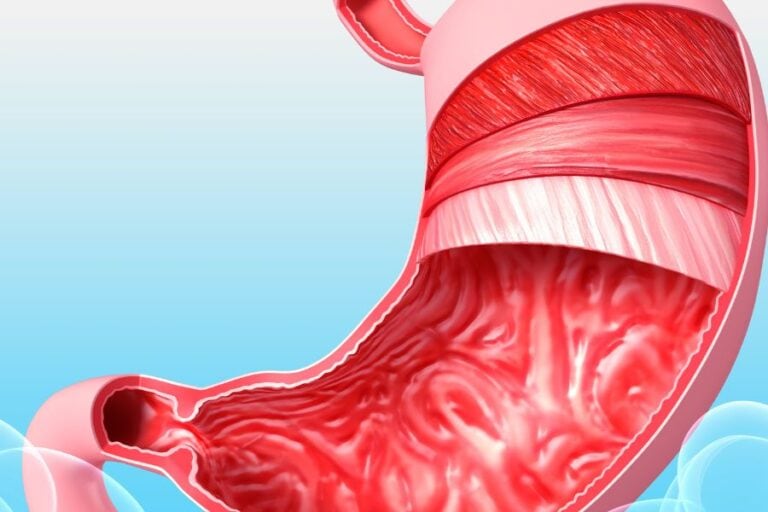You may feel worried should your doctor mentions high LDH levels, but it’s not always a sign of cancer. LDH, or lactate dehydrogenase, is an enzyme that shows up at the time tissues are damaged—whether from something minor like a muscle strain or serious conditions like liver disease or tumors. While elevated levels can hint at cancer, especially aggressive types, they’re just one piece of the puzzle. Being aware of what else could spike LDH—and what steps to take next—helps you stay informed without jumping to conclusions.
Definition and Role of LDH in the Body
Lactate dehydrogenase (LDH) is an enzyme your body uses to turn glucose into energy. It’s found in almost every tissue, especially your heart, liver, kidneys, and muscles.
Whenever cells get damaged—like from injury or disease—LDH leaks into your bloodstream, raising your blood levels. Normal LDH ranges from 135 to 225 U/L for men and slightly lower for women. Kids usually have higher levels.
There are five LDH isoenzymes (LDH-1 to LDH-5), each linked to different tissues. In case one spikes, it can hint at where the damage is happening. While high LDH often signals tissue damage, it’s not cancer-specific—other tests help pinpoint the cause.
Your doctor checks these levels to understand what’s going on inside.
How the LDH Test Is Conducted and Its Procedure
If doctors suspect tissue damage—whether from injury or illness—they might order an LDH test, a simple blood draw that checks your enzyme levels. Here’s how it works:
- Blood Draw: A healthcare provider takes a blood sample, usually from your arm. No special prep is needed, and it’s quick—like a routine checkup.
- Processing: The sample is sent to a lab, where it’s spun to separate the serum (the liquid part of blood) for testing.
- Analysis: Your LDH enzyme levels are measured and compared to a reference range to spot abnormalities.
- Results: In 1–2 days, you’ll get your numbers. An elevated LDH level *could* signal tissue damage, but labs handle samples carefully to avoid errors.
It’s straightforward, but the results help illustrate a clearer health overview.
Conditions Associated With Elevated LDH Levels Beyond Cancer
High LDH levels don’t always mean cancer—they can also signal liver disease or muscle damage.
Should you have had a liver condition like hepatitis or cirrhosis, your LDH could rise due to tissue stress.
Even intense workouts or muscle injuries, like strains or dystrophy, can push those levels up as your cells repair.
Liver Disease Indicators
While elevated LDH levels often raise concerns about cancer, they can also signal liver-related issues that need attention. Lactate Dehydrogenase (LDH) leaks into your bloodstream as liver cells are damaged, making it a useful marker for liver diseases. Here’s what you should know:
- Hepatitis: Viral or autoimmune hepatitis causes liver injury, spiking LDH levels as cells disintegrate.
- Cirrhosis: Chronic scarring from conditions like alcoholism elevates LDH due to ongoing tissue damage.
- Hepatocellular Carcinoma: This liver cancer destroys healthy cells, releasing LDH into your blood.
- Ischemic Hepatitis: A sudden lack of oxygen to the liver (from heart failure or shock) can sharply increase LDH.
If your LDH is high, don’t panic—it’s a clue, not a diagnosis. Your doctor will check for these conditions to pinpoint the cause.
Muscle Injury Markers
LDH doesn’t just point to liver trouble or cancer—it’s also a red flag at the time your muscles take a hit.
Whenever you overwork them or suffer trauma, elevated LDH levels spill into your blood, signaling tissue damage. Conditions like rhabdomyolysis, where muscles deteriorate fast, push LDH higher.
Even your myocardium, the heart’s muscle, releases LDH after a heart attack. Ischemic conditions, like poor blood flow, starve muscles of oxygen, raising LDH too.
Severe infections, such as sepsis, can also hike levels as they damage multiple tissues. Your LDH test results may climb after intense workouts or injuries, so don’t panic—context matters.
Always check with your doctor to pinpoint the cause, whether it’s muscle strain or something more serious.
Significance of LDH Levels in Cancer Diagnosis and Prognosis
Several factors can make LDH levels a key piece of the puzzle at the time of diagnosing and tracking cancer. High LDH levels often serve as a tumor marker, helping doctors spot potential malignancies, especially in blood cancers like leukemia or lymphoma.
However, since LDH isoenzymes can also rise due to non-malignant conditions, it’s not a standalone test but part of a bigger scene. Here’s why LDH matters in cancer diagnosis and prognosis:
- Cancer Diagnosis: Elevated LDH levels can hint at tumors, but doctors need additional tests to confirm.
- Disease Aggressiveness: Higher LDH often means faster-growing cancers and a tougher battle ahead.
- Treatment Response: Falling LDH levels might show therapy’s working, while steady highs suggest disease progression.
- Monitoring Relapse: Regular checks help catch rebounds promptly, giving you a fighting chance.
Interpreting LDH Test Results and Next Steps
Should your LDH test results show levels outside the normal range, don’t panic—it may signal anything from muscle strain to infection, not just cancer.
Your doctor will compare your numbers to standard ranges and look for patterns that may point to specific issues. Together, you can decide whether you need imaging, more tests, or a specialist’s input to figure out the cause.
Normal vs. Elevated Levels
Once your doctor orders an LDH test, comprehending the numbers can feel overwhelming—but it doesn’t have to be. Here’s how to interpret your results:
- Normal levels: For adults, LDH levels typically fall between 135–225 U/L (men) or 135–214 U/L (women). Kids often have higher ranges.
- Elevated LDH levels: These suggest possible tissue damage or conditions like cancer, but they don’t confirm a diagnosis alone.
- Reference ranges: Your lab report will show whether your levels are high, but always discuss them with your healthcare provider for context.
- Next steps: Should your blood test reveal elevated LDH, your doctor might order more tests to pinpoint the cause—whether it’s cancer, infection, or another issue.
Understanding your LDH levels is the initial step toward clarity. You’ve got this.
Possible Underlying Causes
After checking your LDH test results, you could ponder what’s behind higher-than-normal levels. High LDH levels often signal tissue damage, like from a recent injury or intense workout, but they can also point to serious conditions.
Liver disease, hemolytic anemia, or infections could be the culprit. Cancers like lymphoma or leukemia sometimes drive LDH up, but it’s not a surefire sign—many non-cancer issues do too.
Even a false elevation from mishandled samples or too much vitamin C can skew results.
Your doctor will weigh your LDH against other symptoms and tests, since context matters.
Diagnostic testing helps narrow it down, so don’t panic—high LDH alone doesn’t mean cancer. It’s a clue, not a verdict.
Recommended Follow-Up Actions
Since your LDH levels came back high, it’s natural to question what comes next—but don’t let uncertainty spiral. Elevated LDH can signal tissue damage or, less commonly, be a cancer indicator, but it’s not a diagnosis on its own. Here’s what to do:
- Consult your healthcare provider: They’ll interpret your results alongside symptoms and medical history for a thorough evaluation.
- Expect additional testing: Bloodwork, imaging, or biopsies could pinpoint the cause.
- Monitor LDH levels: Repeat tests track changes, especially in the case cancer is suspected.
- Stay proactive: Ask questions and discuss next steps—knowledge eases worry.
Your provider will guide you, so focus on follow-up actions, not fear.
Limitations and Considerations of LDH Testing in Oncology
While LDH testing can hint at possible cancer activity, it’s not a one-size-fits-all tool—there’s a lot it *can’t* tell you. Elevated LDH levels aren’t cancer-specific; they can spike from benign conditions like liver disease or muscle injury. That means false positives are common, so don’t panic should your results be high.
LDH’s role as a tumor marker has limits—it can’t pinpoint cancer alone. Diagnostic testing must include other tools to confirm suspicions. Individual patient factors, like overall health or lab methods, add variability, so your doctor will weigh your clinical image before drawing conclusions.
Always keep in mind: LDH is just one piece of the puzzle. It helps track aggressive tumors but needs context—like symptoms or imaging—to be truly useful. Stay informed, but trust your care team to interpret results wisely.





